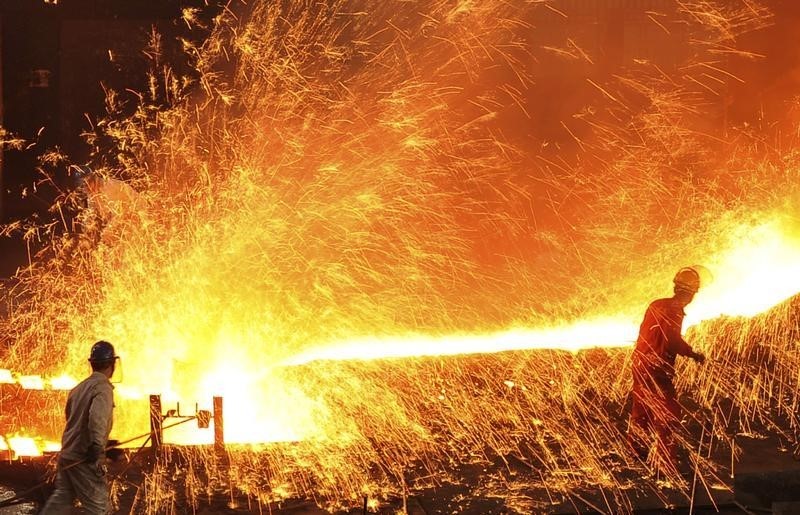(Repeats earlier story for wider readership with no change to text. The opinions expressed here are those of the author, a columnist for Reuters.)
* Graphic of China's seaborne iron ore imports vs. SGX price: http://reut.rs/2zlkFZc
By Clyde Russell
LAUNCESTON, Australia, Nov 9 (Reuters) - If the sharp drop in China's iron ore imports in October looks suspicious, it should be viewed in the light of the record high the previous month and a holiday week.
Preliminary commodity import figures released on Wednesday by China's General Administration of Customs showed iron ore imports for October slumping to 79.5 million tonnes, down a massive 22.7 percent from September's all-time high of 102.8 million. imports were the weakest since February 2016, sparking market concern that China's cuts to steel output over the winter in order to lower pollution were biting far harder, and faster, than initially anticipated.
But while iron ore imports may well moderate somewhat in coming months, the October slump and the September record would better viewed as a whole, rather than two separate months.
It's most likely the case that the week-long holiday early in October caused a pull-forward of iron ore cargoes, boosting the September figures at the expense of October.
Putting the two months together gives a total of 182.3 million tonnes, or an average of 91.2 million.
This is slightly higher than the 89.6 million tonnes average for the first 10 months of 2017, indicating that taken together September and October were hardly weak.
The risk is that October's shock number is over-interpreted by market participants, when in reality it is little more than a statistical anomaly.
The customs numbers also didn't gel with vessel-tracking and port data compiled by Thomson Reuters Supply Chain and Commodity Forecasts.
Shipping data pegged China's seaborne imports for October at 87.1 million tonnes, slightly higher than the 86.3 million estimated in September.
While the vessel-tracking numbers don't align exactly with customs numbers as they exclude overland imports from neighbours such as Mongolia and Russia, they have been a consistently accurate predictor of the official figures.
The shipping data suggests that China's iron ore imports in September weren't actually a record high, but equally, the imports for October were nowhere near as weak as the customs data indicated.
COAL, CRUDE ALSO SLUMP
It wasn't just iron ore imports that looked somewhat off-colour in October, with strong declines also reported for coal, crude oil, copper, edible vegetable oils and rubber.
Coal imports dropped 21.4 percent from a month ago, while copper was down by 23.3 percent, crude oil by 16.2 percent, vegetable oils by 21.7 percent and rubber by 19.7 percent.
Declines of these magnitudes make it all the more likely that October was pay back for an extremely strong September.
While there were good reasons for some retreat in October's commodity imports, the customs figures have likely overstated the issue.
Iron ore imports are likely to moderate over winter as authorities mandate steel output cuts in a bid to limit pollution from coal-powered industries.
The major steel-making province of Hebei will limit steel and iron output by 50 percent in major producing cities including Tangshan, Handan and Shijiazhuang in the winter period from November to March, the official Xinhua News agency reported on Nov. 3.
Efforts to limit the burning of coal are also likely to act as a brake on imports of the polluting fuel over the winter period.
The decline in crude oil imports was a surprise, given refineries normally ramp up output ahead of winter, although imports may have been affected by the smaller, independent refiners exhausting their quotas.
Overall, China's October commodity trade data should be treated with caution, with November's numbers likely to provide a clearer picture of the extent of any slowdown.
(Editing by Christian Schmollinger)
